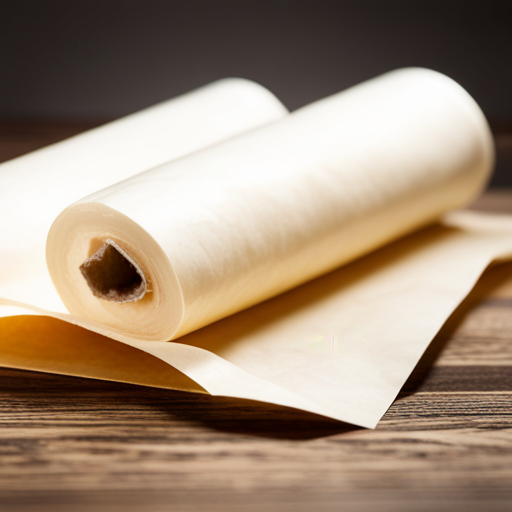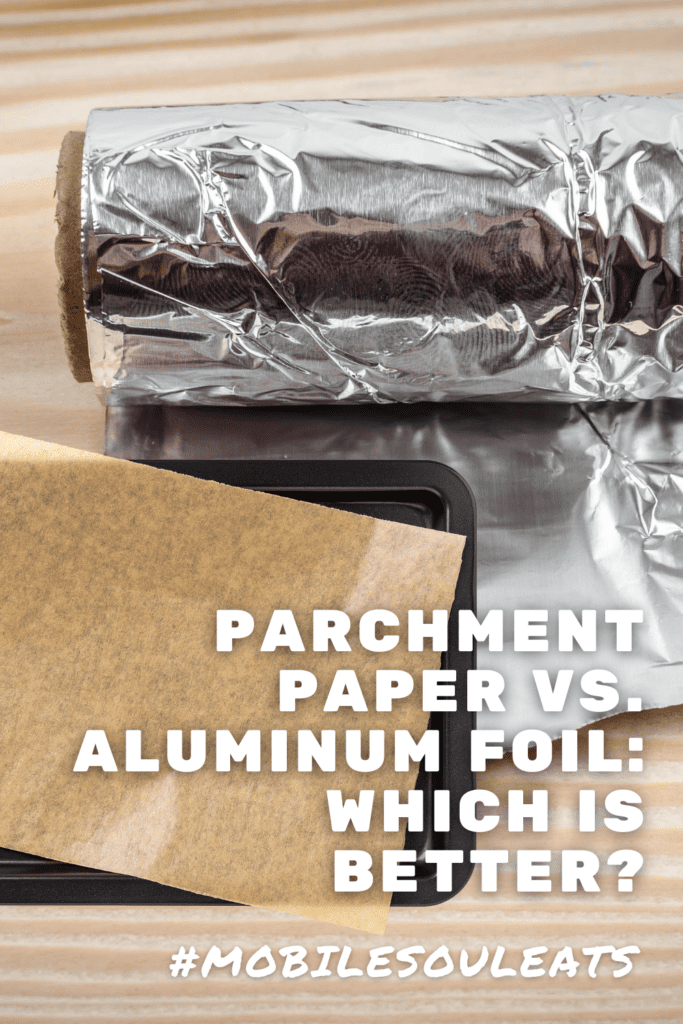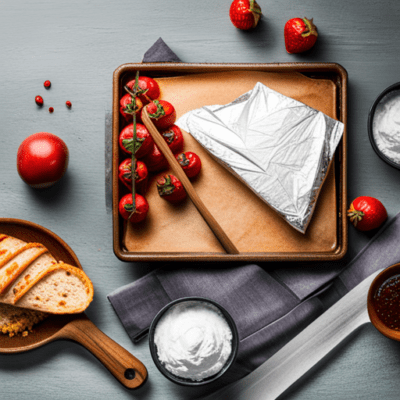When it comes to cooking and baking, the tools you use can have a significant impact on the final result. One of the most common dilemmas faced in the kitchen is whether to use parchment paper or aluminum foil for lining baking sheets, pans, and wrapping food. While both have their advantages, it’s essential to understand their differences and make the right choice for your specific needs. In this comprehensive guide, we’ll explore the pros and cons of parchment paper and aluminum foil, helping you make an informed decision for your next cooking or baking adventure.
Understanding Parchment Paper

Parchment paper is a heat-resistant, non-stick paper that is commonly used in baking and cooking. It is made from cellulose fibers, which are treated to make the paper greaseproof, durable, and resistant to heat and moisture. Parchment paper is safe to use in the oven at temperatures up to 450°F, making it a popular choice for lining baking sheets, pans, and even wrapping food.
Pros of Using Parchment Paper
Even Baking
One of the most significant advantages of using parchment paper is its ability to promote even baking. The thin layer of air created between the baking sheet and the paper helps insulate, regulate temperature, and neutralize hot spots, leading to more consistent and evenly baked goods.
Non-Stick Surface
Parchment paper is naturally non-stick, which means that there’s no need to use additional cooking sprays or oils to prevent your food from sticking to the pan. This makes it easier to remove baked goods from the paper and reduces clean-up time.
Versatility
Parchment paper can be used for a wide range of cooking and baking tasks, including lining cake pans, baking cookies, roasting vegetables, and even cooking fish in parchment packets. Its porous nature allows some steam to escape, preventing dishes from becoming soggy.
Cons of Using Parchment Paper
Limited Heat Resistance
While parchment paper is safe to use up to 450°F, it may start to brown and crisp at higher temperatures. This makes it unsuitable for use under the broiler or in extremely high-heat cooking situations.
Understanding Aluminum Foil

Aluminum foil is a versatile and durable material commonly used in food packaging, cooking, and grilling. It provides an excellent barrier against light, moisture, and oxygen, helping to keep food fresh and protected. Aluminum foil is also a good conductor of heat, making it useful for tasks like covering pans before roasting vegetables or lining grills before cooking.
Pros of Using Aluminum Foil
Heat Conduction
Aluminum foil is an excellent conductor of heat, which means it can transfer high temperatures to your food quickly and efficiently. This can be beneficial when roasting vegetables or cooking meat, as it helps to create a crisp, caramelized exterior while keeping the inside tender and juicy.
Versatility
Aluminum foil can be used for a wide range of cooking tasks, including lining baking sheets, wrapping food for grilling, and even creating makeshift pans for baking cakes and other treats. Its malleable nature makes it easy to mold and shape as needed, providing a custom solution for various cooking scenarios.
Protection
Foil’s ability to form a barrier against light, moisture, and oxygen makes it an excellent choice for wrapping and storing food. It can help to keep food fresh and protected, extending its shelf life and preventing spoilage.
Cons of Using Aluminum Foil
Potential for Burning
Due to its heat-conductive properties, aluminum foil can cause the bottom of cookies and other baked goods to burn before they’ve had a chance to cook all the way through. This can be a significant drawback when baking delicate treats that require precise temperature control.
Non-Stick Surface
Unlike parchment paper, aluminum foil does not have a naturally non-stick surface. This means that you may need to use additional cooking sprays or oils to prevent your food from sticking to the foil, increasing the overall fat content and potentially affecting the final texture of your dish.
Comparing Parchment Paper and Aluminum Foil
Now that we’ve looked at the pros and cons of both parchment paper and aluminum foil, it’s time to compare their performance in specific cooking and baking scenarios.
Baking Cookies
When it comes to baking cookies, parchment paper is the clear winner. Its non-stick surface and ability to promote even baking make it the ideal choice for producing consistently delicious cookies that are evenly cooked and easy to remove from the pan.
Roasting Vegetables
While both parchment paper and aluminum foil can be used for roasting vegetables, aluminum foil may have the edge due to its heat-conductive properties. The foil can help create a crisp, caramelized exterior on the vegetables, while still allowing them to cook through evenly.
Cooking Fish
Cooking fish in parchment paper packets is a popular method that allows for a moist, flavorful result. The porous nature of parchment paper allows some steam to escape, preventing the fish from becoming soggy. Aluminum foil can also be used for this purpose, but the non-porous nature of the foil may result in a less desirable texture.
Lining Cake Pans
Professional bakers often prefer to line cake pans with parchment paper, as it promotes even baking, reduces the amount of crumbs, and makes removing the cake from the pan much easier. While aluminum foil can also be used for this purpose, its heat-conductive properties may result in uneven baking and a higher likelihood of burning.

Making the Right Choice
Ultimately, the choice between parchment paper and aluminum foil will depend on your specific cooking or baking needs. For most baking tasks, like cookies and cakes, parchment paper is the best choice due to its non-stick surface and even baking capabilities. For tasks like roasting vegetables or cooking on the grill, aluminum foil may be a more suitable option due to its heat-conductive properties.
In any case, it’s essential to consider the specific requirements of your recipe and cooking method when deciding which material to use. By understanding the advantages and limitations of both parchment paper and aluminum foil, you’ll be better equipped to make the right choice for your next culinary adventure.


Leave a Reply